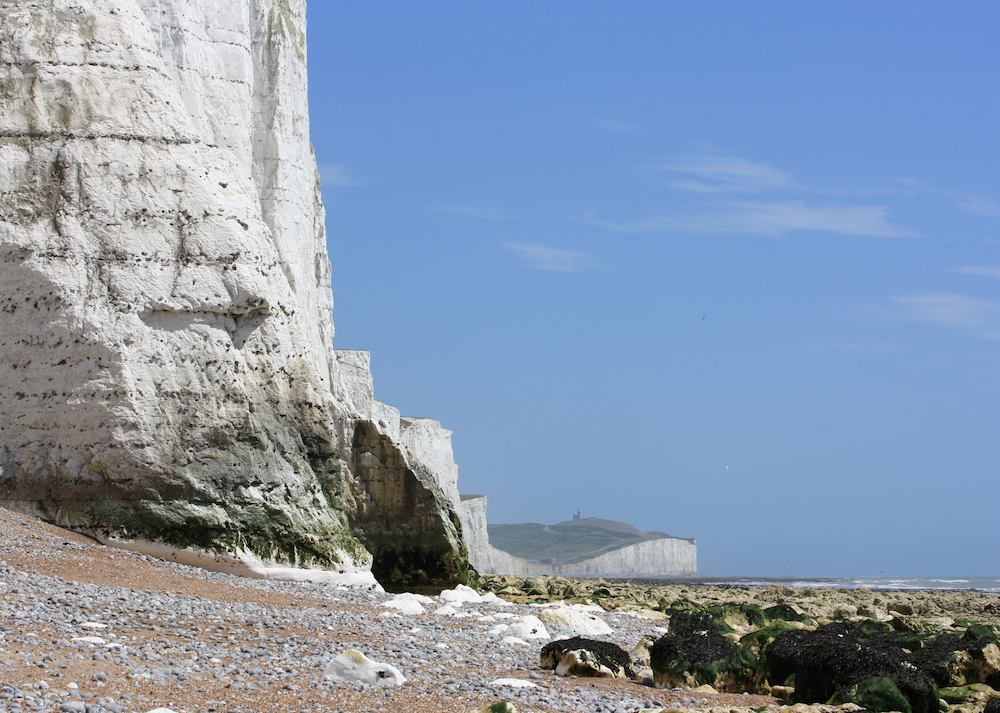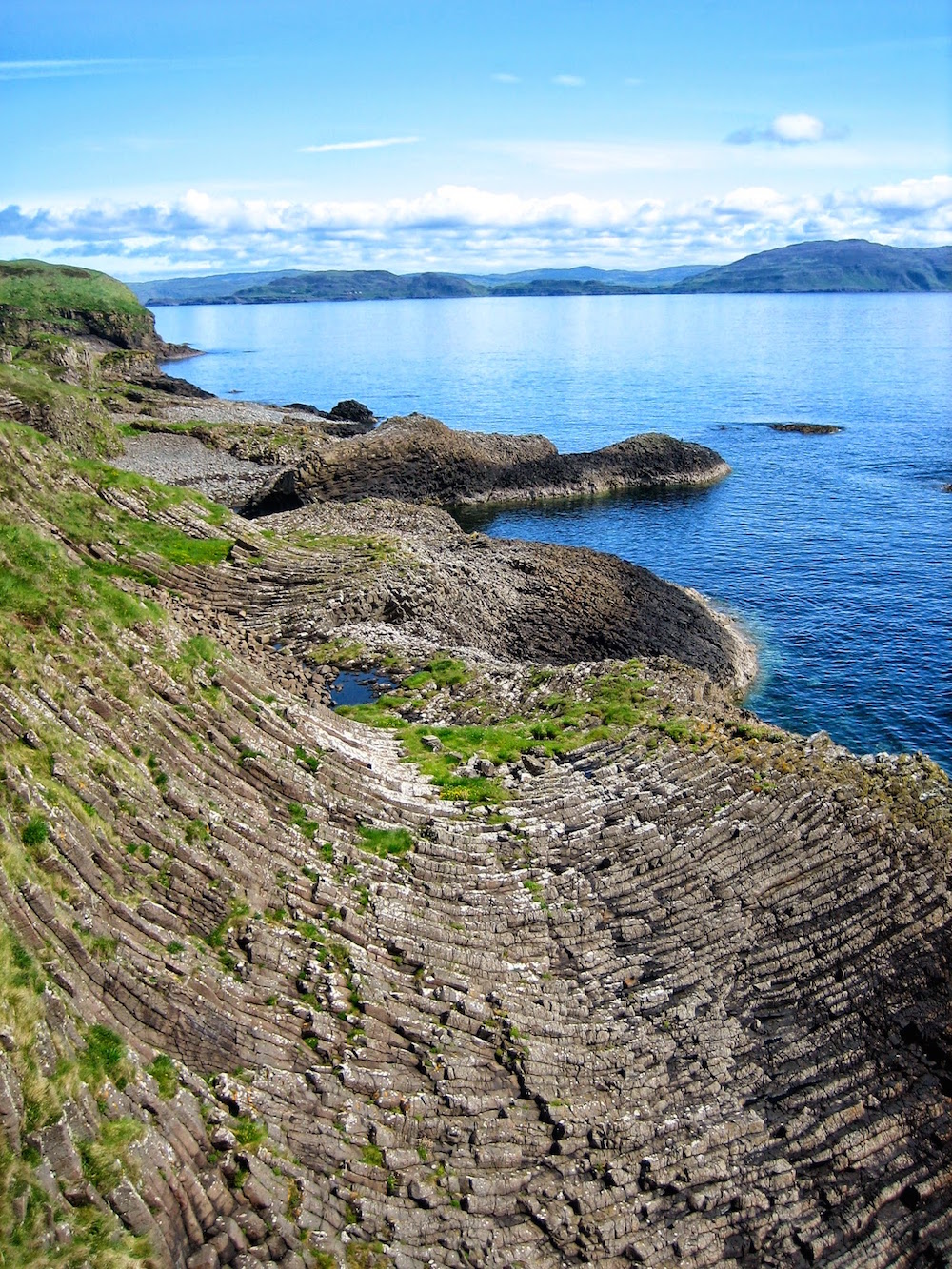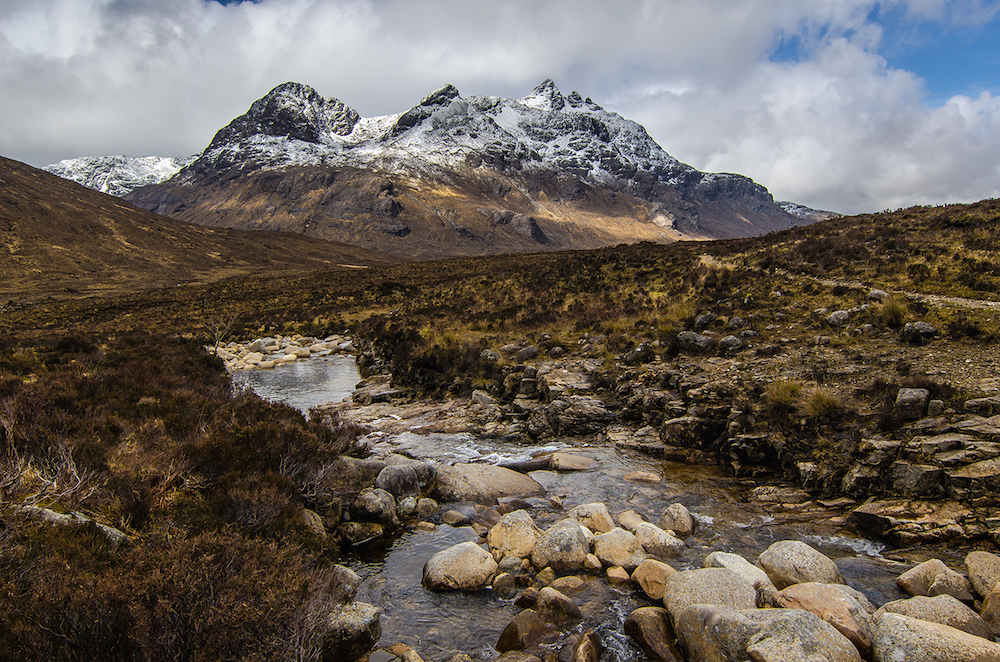In photos: The UK's geologic wonders
Lundy Island

Lundy, a small island in Bristol Channel, is mostly made of megacrystic granite. This granite was emplaced (when a young igneous rock goes into an older rock) into Devonian Morte Slates during the Eocene epoch about 56 million to 33.9 million years ago, according to the society.
Marble Arch Caves

The Marble Arch Caves are 7 miles (11.5 kilometers) long, making them the longest known cave system in Northern Ireland, the society said.
The Seven Sisters & Beachy Head

Located in East Sussex, England, the cliffs at Seven Sisters & Beachy Head are made out of chalk, according to the society.
Staffa's Explosive History

Staffa, an island in the Scotland Hebrides, is made of columnar basalt and "slaggy" basalt that erupted as lava flows during the Paleogene period. Geologists have found ash layers and thin soil layers that suggest the island had both explosive volcanic activity as well as quiet intervening periods, the society reported.
Dramatic Cuillin Hills

These hills are one of the United Kingdom's most dramatic mountain ranges. Hikers come to scale the tall, jagged peak of the main Cuillin Ridge (the Black Cuillin) and the rounded eastern hills of the Red Cuillin, the society said. The hills formed during the early Paleogene from volcanic activity.
A Night at the Rotunda Museum

Philip Hadland took this mesmerizing photo of the night sky next to the Rotunda Museum — constructed in 1829 in the United Kingdom.
Take a Hike ... on Fetlar Island

Located in the Shetland Islands, Fetlar Island is composed of exposed oceanic crust, the society said. It's also a great place for hiking. Photographer Austin Taylor walked along a trail called the Snap that starts at Funzie (pronounced funny) beach.
Get the world’s most fascinating discoveries delivered straight to your inbox.

Laura is the managing editor at Live Science. She also runs the archaeology section and the Life's Little Mysteries series. Her work has appeared in The New York Times, Scholastic, Popular Science and Spectrum, a site on autism research. She has won multiple awards from the Society of Professional Journalists and the Washington Newspaper Publishers Association for her reporting at a weekly newspaper near Seattle. Laura holds a bachelor's degree in English literature and psychology from Washington University in St. Louis and a master's degree in science writing from NYU.


